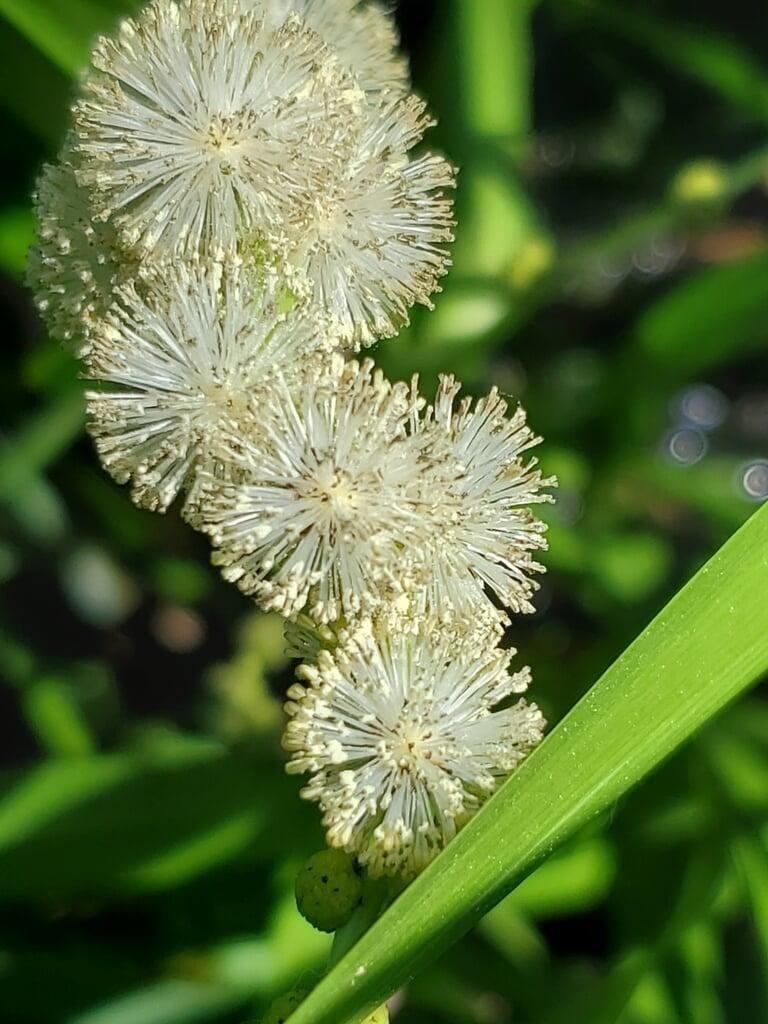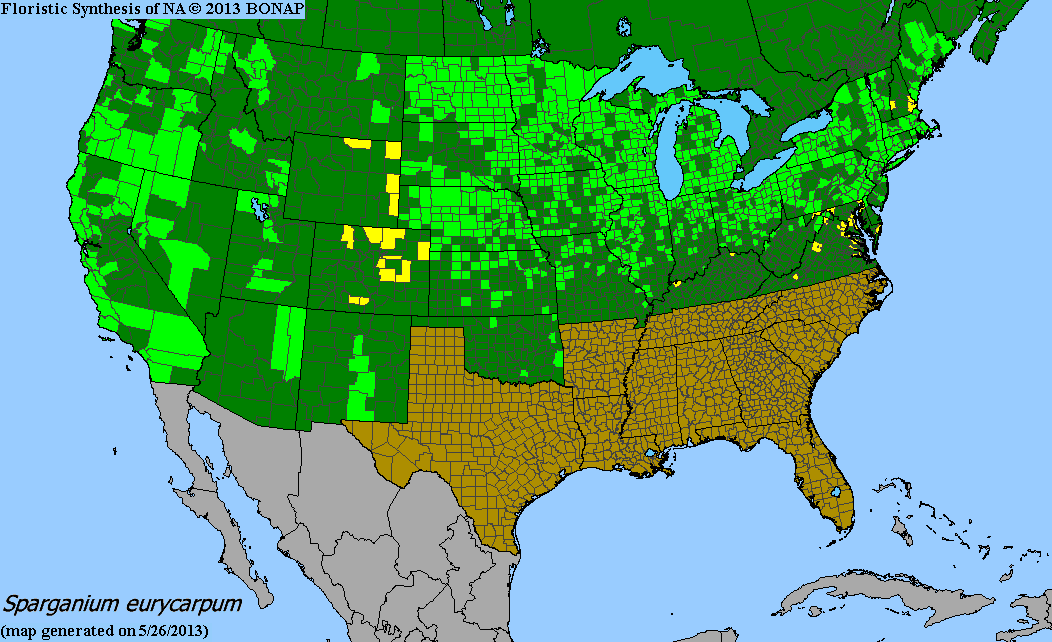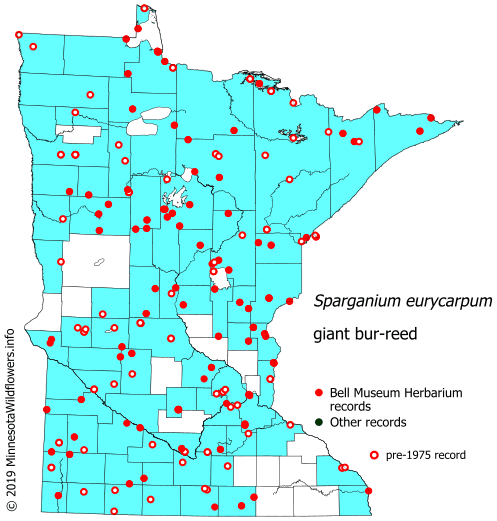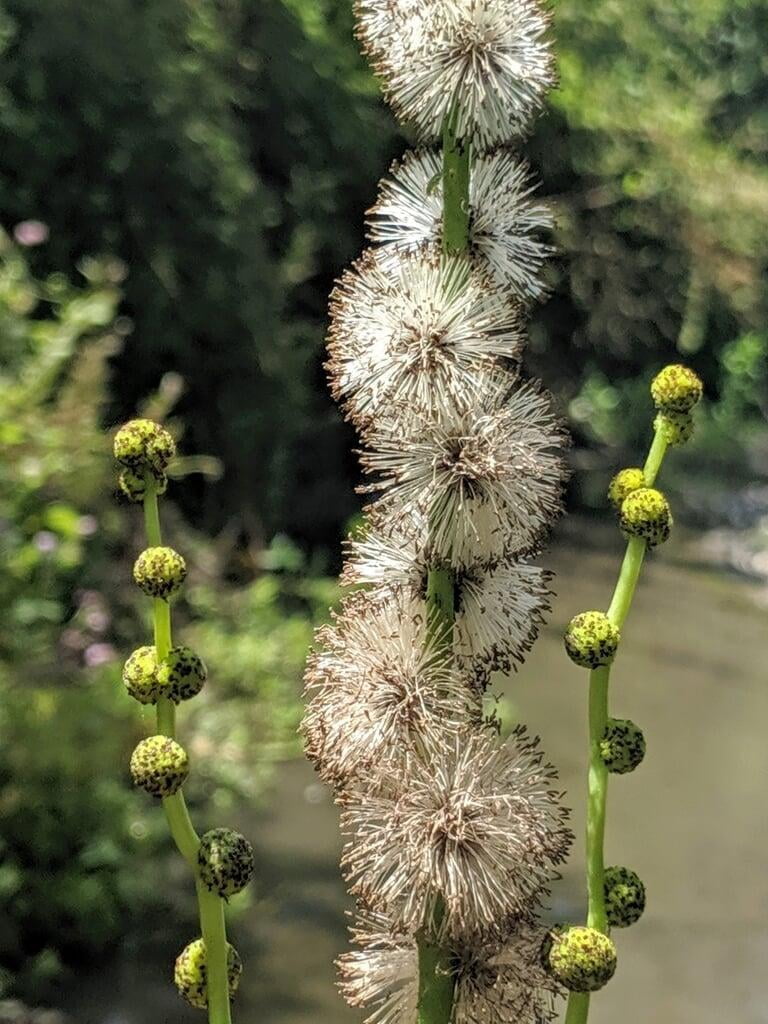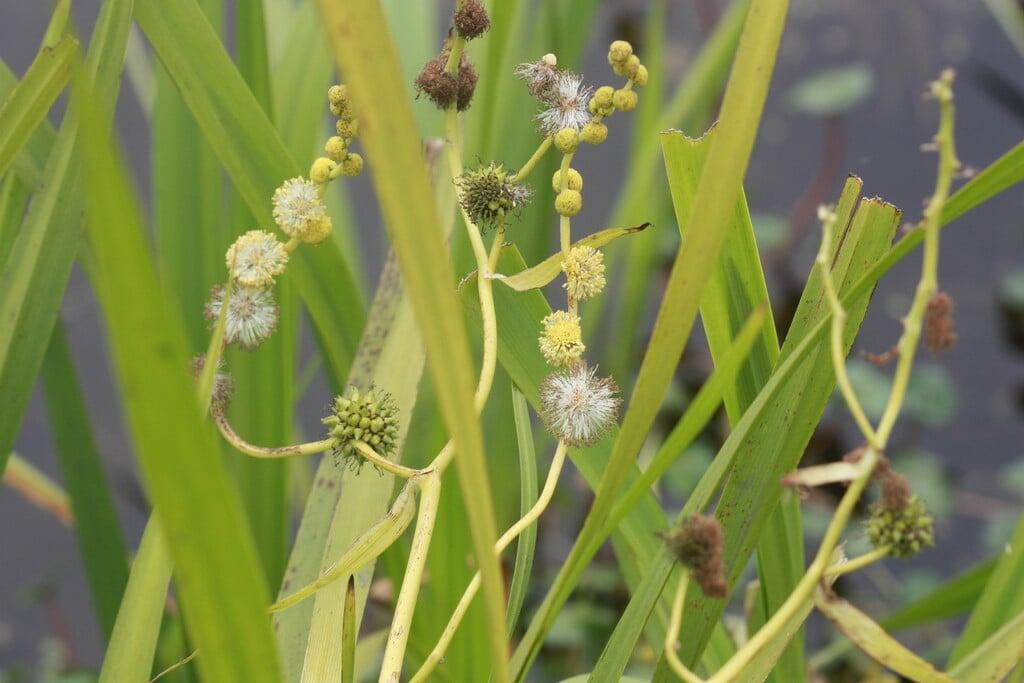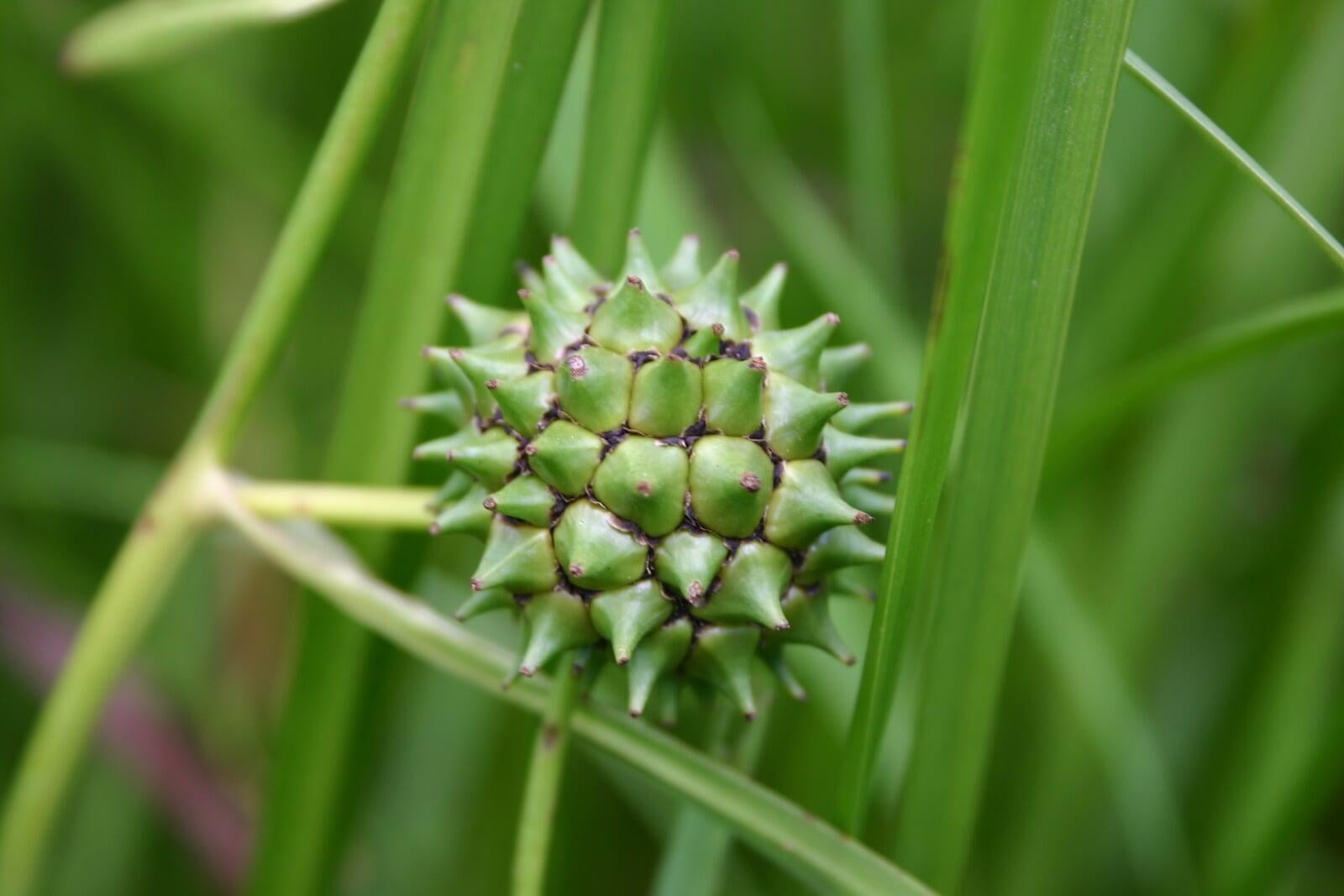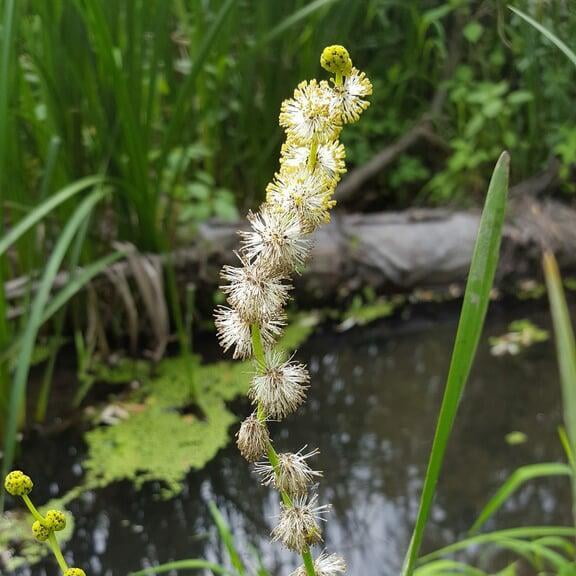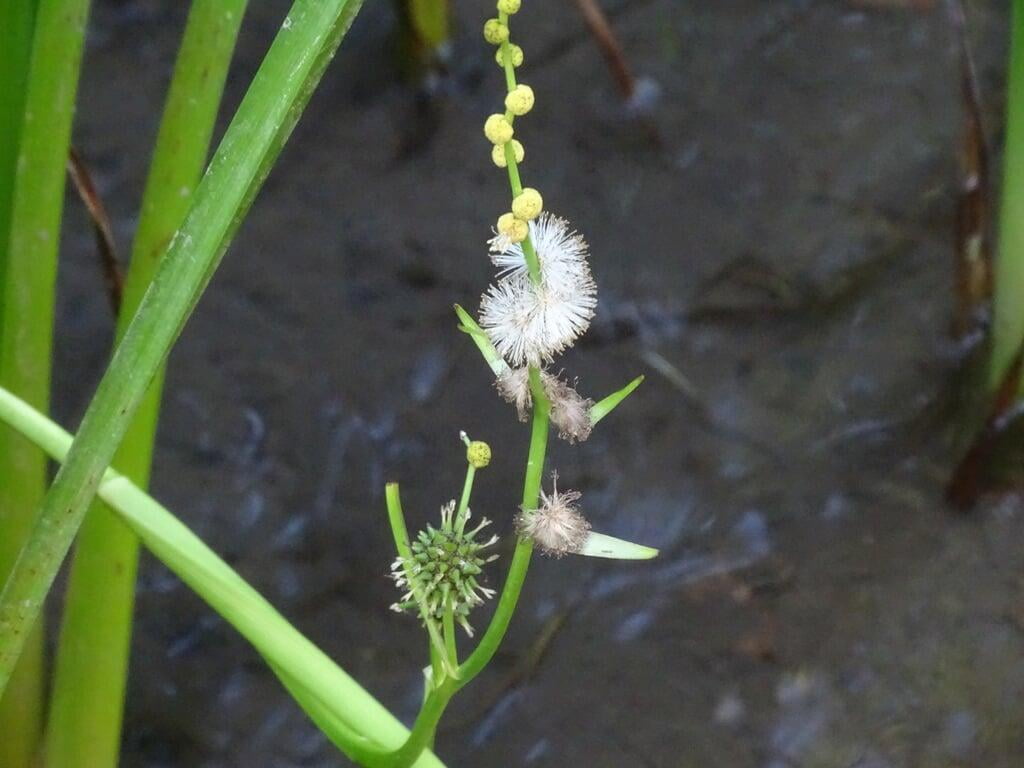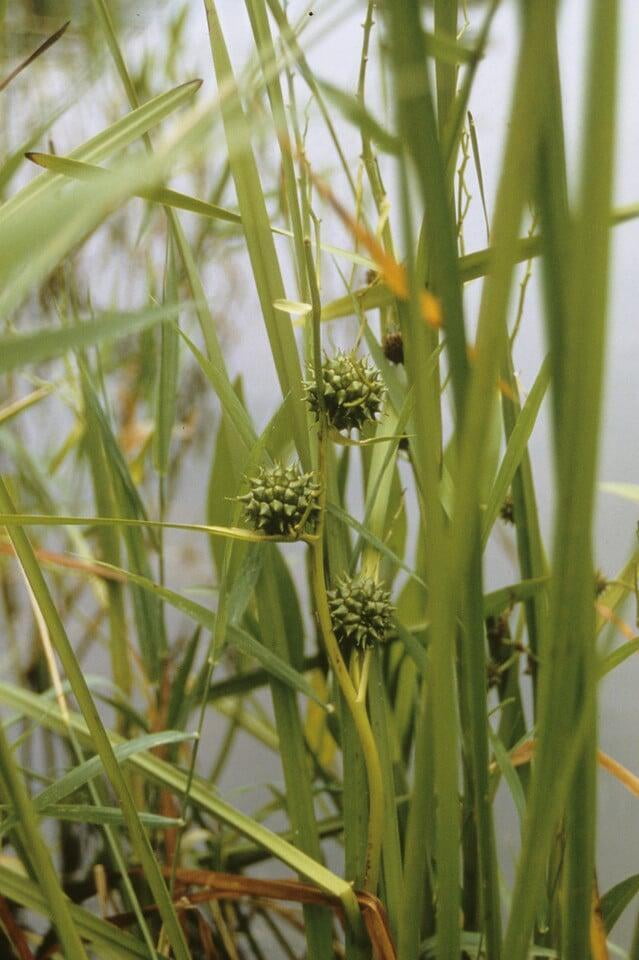Sparganium eurycarpum
Giant burreed Description:
Sparganium eurycarpum, commonly known as broad-fruited bur-reed, is a native aquatic plant species that can be found in wetlands, ponds, and other freshwater habitats throughout North America. This perennial plant belongs to the Sparganiaceae family and is known for its distinctive cylindrical inflorescences that bloom in summer and fall. The plant's dark green leaves are long and slender, providing a natural habitat and food source for various species of wildlife, such as waterfowl and insects. Sparganium eurycarpum is a hardy and adaptable plant that can grow in both submerged and emergent conditions, making it an excellent choice for wetland restoration projects and water gardens.
Apart from its ecological value, Sparganium eurycarpum has ornamental value and is a popular choice for water gardens and pondscapes. Its tall and slender form provides vertical interest in water features, while its unique inflorescences add texture and color to aquatic landscapes. The plant is also easy to care for and requires minimal maintenance, making it an ideal choice for gardeners and landscapers looking for low-maintenance and sustainable plant options. Overall, Sparganium eurycarpum is a valuable and versatile plant species that adds beauty, ecological value, and habitat to wetlands, ponds, and other freshwater habitats.
Native Range:
Giant burreed is found in the Western United States and extends its range all the way to the East coast, with the exception of the United States.
Standard Plant Information:
Plant Height: 2' - 6'
Bloom Time: June - August
Preferred Habitat: Does well in full sun. Often found shallow water, lakes, streams, river banks, swamps, marshes, swales, and wet ditches.
Sowing:
For most homeowners, the best option is to scatter seed on the ground by hand broadcasting at a minimum of 16-64 pls ounces per acre. For even coverage, we recommend that you broadcast seed in perpendicular rows across the site to ensure even coverage.
You’ll want to broadcast any grass seed first, which will get raked into the soil lightly. Next, it is ideal to mulch the area lightly with either a clean (no seed) straw or preferably with our native Little Bluestem straw, sold at our retail garden centers. After a light mulching is complete, now it’s time to broadcast your native wildflower seeds, which should not be raked into the soil. A good rain or watering is sufficient to cover the seed.
Planting:
Simply dig a hole in the soil slightly larger than the plant’s roots. Ensure that the soil line of the plant is maintained during the transfer (i.e. the plant should be at the same level with the ground as it was in the pot). Pack any loose dirt back around the plant and make sure you water it well the same day to ensure it has the best chance of survival.

